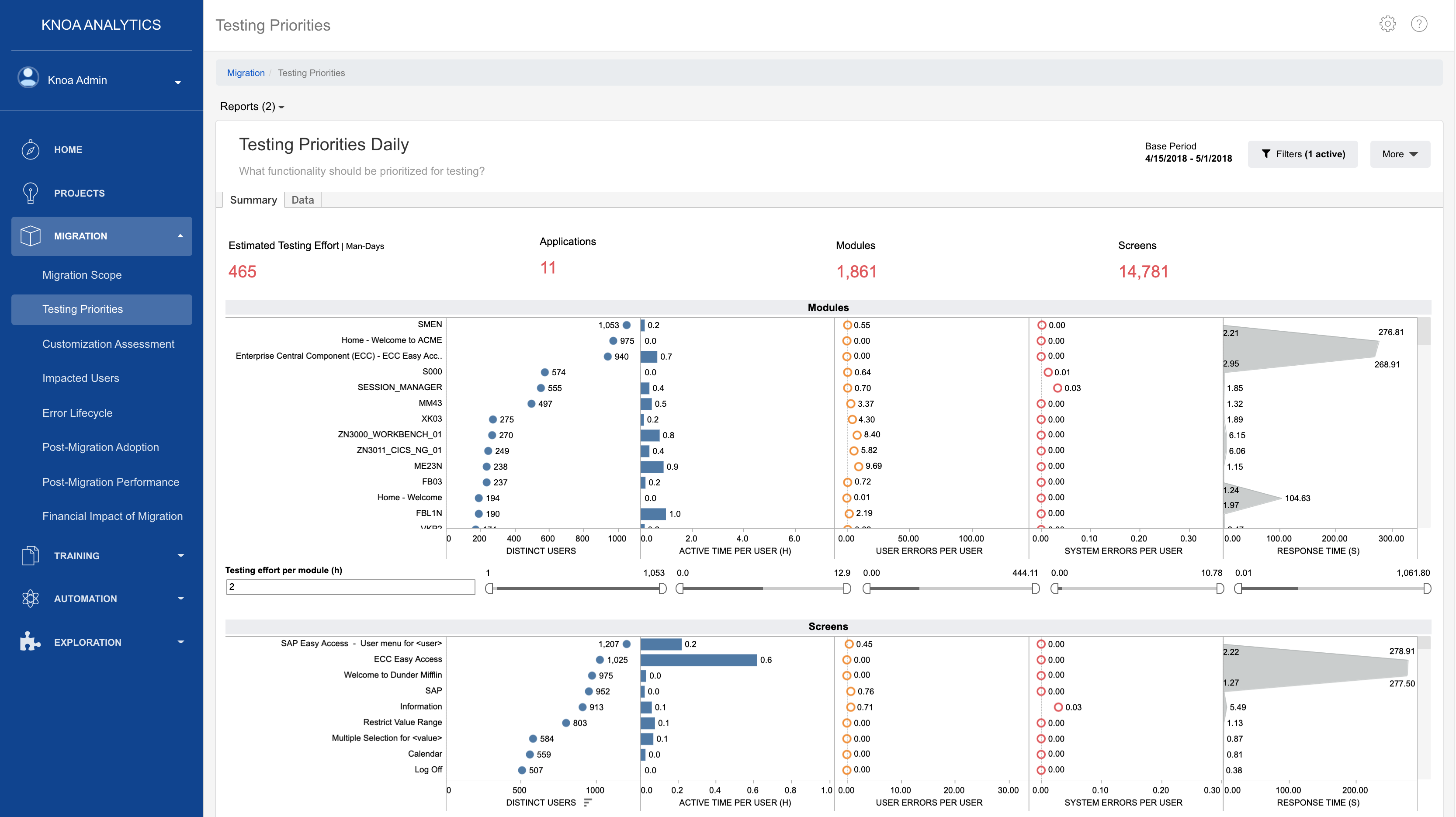Why is Task Mining Important for Testing?
Using task mining and user behavior data in enterprise software testing ensures that the testing process is aligned with real-world usage. It enhances the relevance, efficiency, and accuracy of test cases and it guides the creation of test automation, ultimately leading to more reliable software that meets business and user expectations.
How Task Mining Augments your Testing Strategy
Task mining and user behavior data provided by the Knoa solution address several key use cases for test design, execution, and automation:
- Better understanding of real-world scenarios for more effective test execution
- Improved test case design based on identification of high-frequency workflows and real user journeys
- Enhanced test automation by translating process maps and user journeys into test execution scripts
- Improved testing efficiency by ensuring that resources are focused on critical paths and business processes.
- Better defect detection and prioritization by identifying application areas where users struggle the most
 CASE STUDY
CASE STUDY
AES Corporation Leverages Knoa User Experience Management to Optimize the Migration of its New Enterprise Cloud Platform
Solution Highlights
Better understanding of real-world scenarios
- Task mining captures step-by-step workflows and processes as executed by users, providing insights into how tasks are completed and helping testers focus on scenarios that reflect actual business operations.
- Knoa shows patterns in how end-users interact with the software, including frequently used features, navigation paths, and pain points, helping prioritize test cases based on critical user actions and popular features.
Improved test case design
- Task mining identifies common and repetitive tasks, enabling the creation of test cases that cover high-frequency workflows.
- Task mining also highlights edge cases and exceptions that may not be immediately obvious, improving test coverage.
- Knoa’s user behavior data guides the development of test cases that align with real user journeys, ensuring that tests validate the most relevant functionality.
Enhanced test automation
- Task mining, when coupled with process mining, helps provides complete process execution maps that can be directly translated into automation scripts, reducing manual effort in test creation.
- Task mining also enables dynamic testing by incorporating behavioral patterns into automation tools, simulating real user actions.
Improved testing efficiency
- Task mining reduces redundant testing efforts by highlighting actual usage patterns rather than theoretical workflows. It ensures that resources are focused on critical paths and business processes.
- Real user behavior data allows testers to detect trends, such as frequently accessed features or common errors, and address them proactively.
Better defect detection and prioritization
- Task mining reveals process bottlenecks and deviations, helping to identify areas where bugs are more likely to occur.
- Detailed error reporting pinpoints areas where users struggle, which often correlates with defects or usability issues.
- Aggregate error reporting provides insights into the severity of issues based on user frequency and impact, aiding in prioritization.
Knoa Task Mining Analytics
Related Resources
Let’s Talk!
Learn how Knoa Task Mining can help you improve test design, execution, and automation.
"*" indicates required fields






